Oz- The wizard of Oz: The Perilous Journey
The Wizard of Oz: The Perilous Journey
By John Algeo
Reprint from Quest 6.2 (1993 Summer): 48-55 and American Theosophist 74 (1986): 291-7.
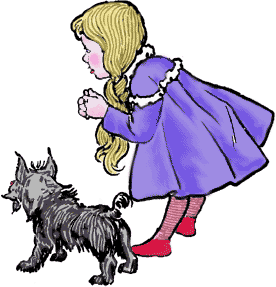 Undoubtedly the best known and most loved of all modern fairy tales is The Wonderful Wizard of Oz. Although it was first published in 1900, the story is most widely known today through the Judy Garland movie of 1939. There are few Americans who have not seen the movie at least once, and there are many who have seen it repeatedly. Through that film,the story has entered so deeply into our national popular lore that almost every week there are allusions to it in newspapers and magazines. Moreover, the film has spread knowledge of Baum's fairy tale over much of the world.
Undoubtedly the best known and most loved of all modern fairy tales is The Wonderful Wizard of Oz. Although it was first published in 1900, the story is most widely known today through the Judy Garland movie of 1939. There are few Americans who have not seen the movie at least once, and there are many who have seen it repeatedly. Through that film,the story has entered so deeply into our national popular lore that almost every week there are allusions to it in newspapers and magazines. Moreover, the film has spread knowledge of Baum's fairy tale over much of the world.
The Wizard of Oz is the archetypical American fairy tale, but like all fairy tales, it appeals to a wide audience--people of all ages and from many cultural backgrounds. It has an optimism and a fascination with gimmicks that are American, but it also deals with the truths of the human heart that are eternal and have no boundaries. An American fairy tale is exactly what Frank Baum set out to write--a story that would be a modern fairytale for American children--but he was more successful than he could have imagined.
Although The Wizard is an extraordinarily popular story, both in America and abroad, few people know that its author, L.Frank Baum, was a member of the Theosophical Society and wrote about Theosophy in a newspaper he edited for some sixteen months in Aberdeen, South Dakota. And fewer yet have recognized that his great American fairy tale is also aTheosophical allegory.
The plot of The Wizard, for anyone who has not seen it recently, is briefly this: Dorothy lives with her Aunt Em and her UncleHenry on a farm in Kansas. One day a cyclone comes; while her aunt hurries to the cyclone cellar for protection, Dorothy looks for her little dog, Toto, who has hidden under a bed. Consequently, Dorothy and Toto are picked up in the house by the cyclone and carried into another world--the Land of Oz.
In Oz, Dorothy's house is plopped down in the easternmost part of the land, right on top of the wicked Witch of the East,thus killing her and freeing the Munchkin inhabitants of that land, whom she had enslaved. Dorothy, understandably upset by all these strange events, wants only to get home to Kansas. She is advised to consult the Wizard who lives in the Emerald City in the center of the Land of Oz. She is also advised to wear the silver shoes (which the movie transformed into ruby slippers) that belonged to the wicked Witch, because everybody knows they are magic, though nobody knows just what they do.
Dorothy and Toto set out on a Yellow Brick Road for the Emerald City. On the way she meets three companions, each of whom joins herin the hope that the Wizard of Oz will be able to give him what he lacks. The first is a Scarecrow, whose head is stuffed with straw and who wants some brains so he can think. The second is a Tin Woodman, who was once an ordinary being of flesh in love with a beautiful Munchkin maiden. Unfortunately,however, he was under a spell cast by the wicked Witch, so he kept chopping off parts of himself and being repaired by a tinsmith until he became the first fully bionic man, with a completely mechanical body. In the process, he lost his heart and thus is no longer able to love the Munchkin maiden; now he wants a heart so he can love again. The third companion is a Cowardly Lion, who ought to be King of the Forest but who is afraid of everything; he wants courage and the will to act.
After many adventures, Dorothy and her three companions reach the Emerald City, where they each gain an audience with theWizard. The Wizard says that he will grant their requests, provided they first do something to prove themselves worthy. They must go to the westernmost part of Oz and there kill the wicked Witch of the West. Dorothy and her companions are not very keen on doing that, but since there seems to be no alternative,they set out for the western land. After many adventures, they succeed in their quest when Dorothy throws a bucket of water on the witch, which dissolves her.Wicked witches, like naughty children, cannot stand water.
When the four companions return to the Emerald City to claim their rewards from the Wizard, he puts them off for a long while. Finally,the Great and Terrible Wizard of Oz confesses that he is really a humbug. He was a balloonist in Nebraska who worked for a circus, going up in his balloon to attract a crowd for the performance. One day a strong wind blew him all the way to Oz and dropped him in the middle of the land. When he fell from the sky,the inhabitants thought he must be a very great wizard indeed, so they accepted him as their ruler, and he led them in building the Emerald City, where he could hide without his humbuggery being discovered by the Witches of the land,of whom he was very much afraid.
Although he is a humbug, the Wizard says he will do what he can to keep his promises to the four companions. He fills theScarecrow's head with a mixture of bran and pins and needles, so that he willhave brand-new brains that are sharp as a pin. He puts inside the Tin Woodman'schest a heart made of stuffed silk, guaranteed not to break. And he gives theCowardly Lion a little green bottle filled with courage (Dutch courage,presumably), from which the Lion is to drink whenever he feels the need.
To help Dorothy get home, the Wizard builds a hot-air balloon to try to sail with her back the way he came. But just as he andDorothy are ready to cast off, Toto runs into the crowd and gets lost. AsDorothy hurries to find her dog, the ropes holding the balloon break, and away it sails with the Wizard, who cannot control it. Thus Dorothy is still strandedin Oz.
The inhabitants of the Emerald City suggest thatDorothy should seek the aid of Glinda, the good Witch of the South. So Dorothy and her companions set out on a third journey. After many more adventures, they reach the court of Glinda the Good, who tells Dorothy that she has all along had the power to go back to Kansas whenever she wants to. The magic silver shoes she is wearing will carry her to any place in the world with three short steps. Dorothy need only say where she wants to go, click her heels thrice, and she will be there. Dorothy now bids good-bye to her friends, says she wants togo home to Kansas, and in three steps, she is there. And so the story ends.
The Wizard of Oz has all the essentials of a true fairy tale. It is set in a perilous, enchanted land, where the humanprotagonist is engaged in a quest. The protagonist, an ordinary person like you or me, faces great dangers, trials, and difficulties, but is helped by some extraordinary and magical friends. After many perilous adventures, the protagonist returns home, having fulfilled the quest. The Wizard of Oz is also a remarkably Theosophical fairy tale. It is indeed a Theosophical allegory.
Consider first the two lands of Oz and Kansas. They are the setting of the story and provide its chief theme: Dorothy is questing in Oz, with the aim of returning to Kansas. The two countries are obviously of cardinal importance to the story and its meaning. Kansas is depicted as a gray, colorless, flat, featureless landscape, and so it is sometimes thought to represent the ordinary, dull world of reality. Oz, on the other hand, is vibrant with color and adventure and interesting people and things, so it is thought to represent the world of the imagination and of fantasy.
Such an interpretation, however, does not comfortably fit the overall plot of the story. Although Dorothy enjoys Oz, while sometimes being a little frightened by it, all she wants to do from the time she first arrives there until the silver shoes carry her away is to get back home to Kansas. Oz is a nice place to visit, but Dorothy wants to live in Kansas. In the story, Kansas, not Oz, is the desirable place to be.
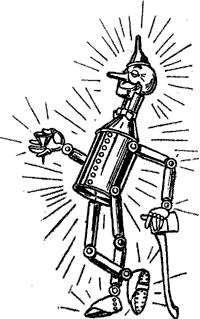 We can see two important things about the Land of Oz if we look at a map of the country, such as one of those published by the International Wizard of Oz Club, Inc. (an organization of people who like the Oz books and who share their enthusiasm with one another). One of the things to note is that Oz has a central green area, the Emerald City, surrounded by four regions, each with a different symbolic color (blue, yellow, red, and purple), within the overall shape of a four-sided figure. The land is bounded on all four sides by an impassable desert, a "ring-pass-not," that isolates Oz from all other lands. These ingredients of the topography of Oz--the impassable barrier, the four-sidedness, the symbolic colors, the circle, and the center--are also the ingredients of a mandala.
We can see two important things about the Land of Oz if we look at a map of the country, such as one of those published by the International Wizard of Oz Club, Inc. (an organization of people who like the Oz books and who share their enthusiasm with one another). One of the things to note is that Oz has a central green area, the Emerald City, surrounded by four regions, each with a different symbolic color (blue, yellow, red, and purple), within the overall shape of a four-sided figure. The land is bounded on all four sides by an impassable desert, a "ring-pass-not," that isolates Oz from all other lands. These ingredients of the topography of Oz--the impassable barrier, the four-sidedness, the symbolic colors, the circle, and the center--are also the ingredients of a mandala.
Oz is a mandala. Mandalas represent the human psyche and the world of samsara--the manifold, beautiful, enticing, but also frightening world of differentiation and becoming. And that is what Oz is. Oz is samsara, the seductive world of earthly beauty, which draws the soul to it. You and I live in Oz. It is this world, this various, dappled world, this magical world of divided beauty.
Kansas, on the other hand, is that world from which we have come before we find ourselves in the perilous land of the separate self. Kansas is that world where there is no differentiation--but only Oneness: no color, which is diversity, not even any black and white, which are opposites, but only the unity of gray; no various hills and valleys, but only the uniform smoothness of the Great Plains; no water, which is the cause and symbol of life and growth, but only the dryness of a world of unchanging reality. Kansas is the permanent world of Oneness from which we have all come and to which we are destined to return. It is our source and our goal. Kansas is devachan or nirvana. Like Dorothy, we have but one purpose in this world of Oz, this samsara of changing appearance, and that is to get home to Kansas, the nirvana of permanent Truth.
In using Kansas to stand for perfection, Baum was undoubtedly having a little fun. The reputation of Kansas, in Baum's day or ours, does not live up to what we expect of devachan or nirvana. Baum himself undoubtedly was ambivalent about the Great Plains, including the Dakotas, where he lived for a while, and Kansas, the archetypically American state, the true heartland of America. Baum makes much of the flat, gray, dry appearance of Kansas in the first chapter of The Wizard. It is not an attractive place. However, each of those negative features can also be thought of in a positive way--especially as characteristics of nirvana.
Part of Baum's joke is that things are never what they seem. Dorothy seems to be a simple and harmless little girl, but it is she who kills the wicked witches of both East and West. The Scarecrow seems to lack brains, but he has all the ideas in the company. The Tin Woodman seems to lack a heart, but he is so full of sentiment that he is always weeping. The Cowardly Lion seems to be a coward, but he takes brave action whenever it is called for. The Wizard seems to be great and powerful, but he is actually a humbug. Oz seems to be a glorious and delightful land and Kansas to be dry, gray, and dull--but Oz is a world of illusion and Kansas is really home. Things are not what they seem, in Oz or Kansas.
If we look at the map of Oz again, we can discover a second important thing about it. The outline of the Land of Oz is that of a rectangle. The Land of Oz is the same shape as the State of Kansas. Oz is Kansas. The two places in the fairy tale are finally the same, just as nirvana and samsara are the same reality, only viewed differently. Dorothy can go home so easily, with just three short steps, because in reality she has nowhere to go. She is already home, and needs only to realize that fact in order to make the homecoming real.
Other aspects of the story are also symbolic. Dorothy's name (a variant of Dorothea, a reversal of Theodora) means "gift of God." As that name suggests, Dorothy is the soul sent from God, out of the nirvana of Kansas into the samsara of Oz, here to find her way back again to the undifferentiated unity from which she comes.
Waiting in Kansas are Auntie Em and Uncle Henry, who represent the primordial feminine and masculine forces, which H. P. Blavatsky called Mulaprakriti and the Unmanifested Logos. Baum's wife was named Maud, and his mother-in-law (a strong woman and powerful influence in his life) was named Matilda; the initial of their names is also the first letter of mother. Thus M, the initial and Auntie Em's name, suggests the archetypal feminine. By similar associations, Henry (which means "ruler of the home") suggests the archetypal masculine.
Dorothy is brought from Kansas to Oz by a cyclone. A cyclone is a great circular wind, a gyre. The Greek word from which cyclone comes means a circle or the coil of a serpent. The cyclone is the cycle of necessity, the round of birth and death, which catches us up and brings us into life, that is, to Oz.
Dorothy is caught in the cyclone because she is distracted by her little dog, Toto. Toto expresses the archetype of the mischievous beast. That archetype represents the animal nature in all of us; and when we are led astray by it, when we follow it heedlessly, we are caught up by the passionate winds of the cycle of necessity and blown away to the world of samsara. Toto is the little beast in each of us, our special pet from whom we are loath to part; and attachment to our mischievous animal nature brings us into birth.
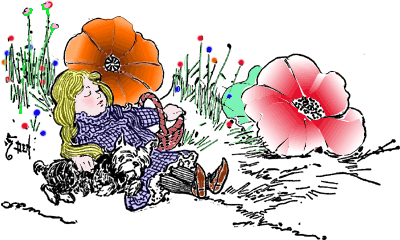
In Oz, Dorothy acquires three companions, in order(and the order is important): the Scarecrow, the Tin Woodman, and the CowardlyLion. These companions think they lack and thus have the need to develop(respectively) intelligence, love, and courage or the will to act. Dorothy's three companions are clearly thinking, feeling, and doing; manas, kama, and sthula sharira; the mental, emotional, and physical bodies. And she acquired them in that order, from "highest" to "lowest," just as we do when we come into incarnation.
A statement published by Annie Besant, but perhaps written by H. P. Blavatsky, describes the three aspects of our personality as they must be developed to respond to the perils of life: "There is no danger that dauntless courage cannot conquer; there is no trial that spotless purity cannot pass through; there is no difficulty that strong intellect cannot surmount." Dauntless courage is what the Lion must develop. Spotless purity is what the Tin Woodman must achieve (he is constantly being polished in the story, to clean away the rust that he is subject to). Strong intellect is what the Scarecrow wants above all.
The Scarecrow and the Tin Woodman also debate which is more important to have: brains or a heart. And their debate is reminiscent of that section in H. P. Blavatsky's Voice of the Silence called "The Two Paths," in which the intellectual Doctrine of the Eye is compared with the compassionate Doctrine of the Heart. The Scarecrow and Tin Woodman's debate is left unresolved, with the implication that both are good but that, as Dorothy decided, it doesn't matter so much which is more important if only one gets back to Kansas-nirvana. Attaining the goal is all-important. The means for doing so is not.
Dorothy's quest in Oz is to find her way home, back to Kansas, back to nirvana. But it has three phases. First, the journey from the East, where she lands in Oz, to the Emerald City in the center of the land; second, from the center to the West to slay the wicked Witch, with a return again to the center; and third, from the center to the South to consult Glinda the Good, from whom Dorothy learns the way home. The route that Dorothy follows has the shape of a big T, its three points defining an inverted triangle, the triangle of matter. What do its three phases suggest?
In the first phase, Dorothy follows the Yellow Brick Road to find the Wonderful Wizard at the center of Oz. The Yellow Brick Road strongly suggests the Path, the mystic way, that leads to enlightenment. Its yellow is the yellow of gold--the metal that does not corrode or rust, the perfect metal. As Dorothy and her companions follow the Road, they are faced with many perilous adventures (most of which were omitted from the movie). The Besant-Blavatsky statement mentioned earlier begins:
"There is a Road, steep and thorny, beset with perils of every kind, but yet a Road, and it leads to the very heart of the universe." The Yellow Brick Road is that Road, and the Emerald City, to which it leads, is the heart of the universe of Oz.
At the end of the Road are the Emerald City and the Wizard. Emerald or green is the color of harmony, of balance; it is midway in the color spectrum; it is the color of the fourth or harmonizing ray. The aim of following the Path is to establish that harmony. The aim is also to find the Teacher, the Guru, who can show us the way home. The Wizard represents, among other things, that Teacher.
In the second phase of the quest, Dorothy is sent to the West, to slay consciously the wicked Witch who rules there, just as she unconsciously slew the wicked Witch of the East when she landed in Oz. East and west are points of the compass with well-established symbolic meanings. East is the place of sunrise; it betokens the beginnings of things; it is birth. West is the place of sunset; it betokens the ending of things; it is death. In Irish myth and other mythologies from all over the world, the land of the West is the country of the dead. The wicked Witches of East and West represent, respectively, the desire for birth and the fear of death that accompany our coming into and passing out of this life.
Dorothy's quest is for salvation, liberation, enlightenment, freedom from birth and death. And during this mythic fairy tale, she achieves it. The story is, as it were, of her last incarnation; she is one of those who return no more. When she lands in Oz, she crushes the wicked Witch of the East, thus overcoming the desire for further birth. That is an unconscious feat because it is not the result of her actions in this life, which is just beginning, but rather is the fruit of past accomplishments. That this is her last life is due to her karma from earlier, unremembered lives. The crushing of the wicked Witch of the East is therefore unconscious on Dorothy's part.
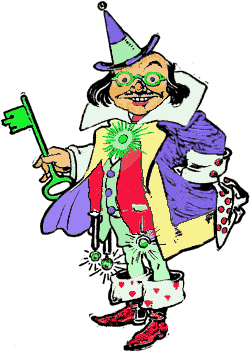 During the second phase of her quest, however, she must consciously meet and slay the other wicked Witch, that of the West, who represents the fear of death. The gaining of nirvana and the transcendence of the personal self is a kind of death, the death of separateness. To achieve our quest, we must destroy the fear of death, we must slay the wicked Witch of the West. And so Dorothy does. She liquidates the Witch; she dissolves the fear of dissolution; she washes away the last stains of separateness.
During the second phase of her quest, however, she must consciously meet and slay the other wicked Witch, that of the West, who represents the fear of death. The gaining of nirvana and the transcendence of the personal self is a kind of death, the death of separateness. To achieve our quest, we must destroy the fear of death, we must slay the wicked Witch of the West. And so Dorothy does. She liquidates the Witch; she dissolves the fear of dissolution; she washes away the last stains of separateness.
We can overcome death and illusion only in the world of death and illusion. We must pass through the valley of the shadow of death to come to the land of eternal light. So Dorothy must go to the uttermost West, encounter the wicked Witch of death, and overcome her with water, the symbol of life.
What shall we make, however, of Dorothy's return to the Emerald City after she has conquered her fear of death, when she discovers that the Wizard, the Teacher, the Guru, is after all a humbug? This is perhaps the most Theosophical of all details in the fairy story. The Wizard is a humbug because all teachers we find outside ourselves are humbugs. One of the cardinal messages of Theosophy is that we can rely on no one to save us but ourselves. As The Voice of the Silence says, "Prepare thyself, for thou wilt have to travel on alone. The Teacher can but point the way." Each student must walk the way alone. Reliance on a teacher, on a guru, must inevitably end in disappointment. All teachers are humbugs, save one--the Teacher Within.
In a sense, the picture of the Wizard, ensconced in his throne room in the Emerald City, where he tries desperately to disguise his humbuggery, is a satire on all authority and particularly on religious authority. When visitors come to the Emerald City, they are required to put on a pair of green glasses, so everything appears green to them. The green glasses are like the dogmas that religious wizards insist their followers adopt so their ecclesiastical cities will look green and vital.
The joke is that the Emerald City really is made of emeralds; it really is green, quite naturally. Religion really is what it says it is--a place of treasures and marvels--but the humbug wizards who have got themselves put in charge of it--the priests and ministers--have no faith in the natural value of their city, so they require the unnecessary and artificial spectacles. They think that emeralds need the assistance of green glasses. In another sense, the guru is a humbug only because we make one of him. We insist that he tell us what to do. We want him to save us. When we ask the teacher to do for us that which only we can do for ourselves, we have made a humbug out of him. Finally, the teacher-wizard must sail off in his balloon, powered by all the hot air he and we have forced into it. And then we are left by ourselves to find our own way.
So Dorothy sets out on the third phase of her quest.This time she travels to the land of the South to seek the counsel of Glinda, the good Witch. To travel south is to travel deep within ourselves. The Mississippi River, that Father of Waters, like most rivers in the United States, flows southward. To travel south is to travel in the natural direction towards the ocean of unity. Glinda represents the intuition within each of us--the glint of the light of Truth, the only true source of guidance. What Glinda tells Dorothy is that she has always had the power to go back to Kansas; Dorothy needs no guru, for she is her own guide. She need only rely upon herself, upon her own feet, clad in the silver shoes that are her contact with the earth of Oz, which is also the earth of Kansas. For Oz is Kansas; samsara is nirvana.
 If there is a "moral" to The Wonderful Wizard of Oz, this is it: we must rely on ourselves, for we alone have the power to save ourselves. That moral is made throughout the book also with regard to Dorothy's three companions. The Scarecrow thinks he needs brains; but whenever the four companions find themselves at an impasse, it is the Scarecrow who comes up with the clever plan to help them. The Tin Woodman thinks he needs a heart; but he is the one who is constantly worried that he may step upon a bug and harm it and who is ever in danger of rusting from his own tears because he feels such compassion for others that he freely weeps. The Cowardly Lion thinks he needs courage; but he is the one who acts bravely to save the company whenever they are threatened by danger. Dorothy's companions, like Dorothy herself, have within themselves the qualities they are seeking. We each have everything we need; we lack only the intuition of Glinda the Good to tell us so.
If there is a "moral" to The Wonderful Wizard of Oz, this is it: we must rely on ourselves, for we alone have the power to save ourselves. That moral is made throughout the book also with regard to Dorothy's three companions. The Scarecrow thinks he needs brains; but whenever the four companions find themselves at an impasse, it is the Scarecrow who comes up with the clever plan to help them. The Tin Woodman thinks he needs a heart; but he is the one who is constantly worried that he may step upon a bug and harm it and who is ever in danger of rusting from his own tears because he feels such compassion for others that he freely weeps. The Cowardly Lion thinks he needs courage; but he is the one who acts bravely to save the company whenever they are threatened by danger. Dorothy's companions, like Dorothy herself, have within themselves the qualities they are seeking. We each have everything we need; we lack only the intuition of Glinda the Good to tell us so.
The Wizard of Oz came to Baum as a kind of inspiration. Baum was a remarkably motherly man. He looked after his children--all boys--in their sicknesses and accidents; he comforted them in their sorrows. He told them bedtime stories. Baum's stories became so famous that neighboring children would come to the Baum house every day to hear the evening tale. One evening a story came to Baum that he recognized as having great potential; so after the children were put to bed, he jotted down the essentials of the story on such scrap paper as he had at hand. The result was the outline of The Wonderful Wizard of Oz. In later years, when asked how he had written the book, Baum said:
It was pure inspiration.... It came to me right out of the blue. I think that sometimes the Great Author has a message to get across and He has to use the instrument at hand. I happened to be that medium, and I believe the magic key was given me to open the doors to sympathy and understanding, joy, peace and happiness.1
Baum certainly did not set out to write an allegory, but he was inspired to write a story that, like all good fairy tales, has depths of meaning of which the writer himself would have been only dimly aware. Baum's membership in the Theosophical Society and his background and beliefs were such as to fit him for the writing of a fairy tale filled with the Ancient Wisdom, as is The Wonderful Wizard of Oz.
H. P. Blavatsky once wrote that the ancient Theosophists were called analogists because of their custom of interpreting all scriptures and sacred symbols as metaphors for an inner reality. It is precisely in this way that fairy tales, traditional ones and modern ones alike, are of value. Fairy tales are analogs of Truth. When we have "comprehended their hidden meaning" (as HPB said), we have seen into ourselves and recognized our own powers and potentials. We have learned that upon our feet are silver shoes that can carry us home whenever we will use them. For home is here, Kansas is Oz, heaven is all about us, waiting only for us to recognize it. That is the Ancient Wisdom in all fairy tales.
Note
-
Cited by Michael Patrick Hearn, ed., The Annotated Wizard of Oz (New York: Clarkson N. Potter, 1973), 73.


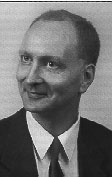 In the mid-1890's Rudolf Steiner (1861--1925) was repeatedly hurt by personal remarks made by his close friend Moritz Zitter (d. 1921). Even when recounting the incident a quarter century later, Steiner would still not admit his friend's observations contained some truth. Yet Zitter's stinging criticism forms a plausible trigger for the revolutionary psychological and spiritual changes Steiner underwent during 1896 to 1897--the period he himself described as that of his "profound transformation."
In the mid-1890's Rudolf Steiner (1861--1925) was repeatedly hurt by personal remarks made by his close friend Moritz Zitter (d. 1921). Even when recounting the incident a quarter century later, Steiner would still not admit his friend's observations contained some truth. Yet Zitter's stinging criticism forms a plausible trigger for the revolutionary psychological and spiritual changes Steiner underwent during 1896 to 1897--the period he himself described as that of his "profound transformation." With each new generation of members in the Theosophical Society, we find the same questions being asked. New members wonder just what this Theosophy is that they're being told about. Is it true? Was it made up by Helena Petrovna Blavatsky and her followers? What does it really say? With conflicting texts and a diversity of dissenting views among members, newcomers can be left bewildered, perhaps giving up and moving on to other groups without finding spiritual satisfaction. How did we let them down?
With each new generation of members in the Theosophical Society, we find the same questions being asked. New members wonder just what this Theosophy is that they're being told about. Is it true? Was it made up by Helena Petrovna Blavatsky and her followers? What does it really say? With conflicting texts and a diversity of dissenting views among members, newcomers can be left bewildered, perhaps giving up and moving on to other groups without finding spiritual satisfaction. How did we let them down?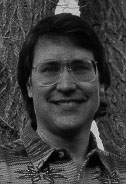 At the climax of his great healing vision, the nineteenth-century Lakota medicine man Black Elk glimpsed the breathtaking wholeness of the universe. As poetically summarized by Black Elk's interviewer (Neihardt 36; cf Holler xx-xxi, 1, 7, and DeMallie xxii, 129-30), Black Elk saw that he was "standing on the highest mountain of them all, and round about beneath me was the whole hoop of the world. And while I stood there I saw more than I can tell and I understood more than I saw; for I was seeing in a sacred manner the shapes of all things in the spirit, and the shape of all shapes as they must live together like one being. And I saw that the sacred hoop of my people was one of many hoops that made one circle, wide as daylight and as starlight, and in the center grew one mighty flowering tree to shelter all the children of one mother and one father. And I saw that it was holy."
At the climax of his great healing vision, the nineteenth-century Lakota medicine man Black Elk glimpsed the breathtaking wholeness of the universe. As poetically summarized by Black Elk's interviewer (Neihardt 36; cf Holler xx-xxi, 1, 7, and DeMallie xxii, 129-30), Black Elk saw that he was "standing on the highest mountain of them all, and round about beneath me was the whole hoop of the world. And while I stood there I saw more than I can tell and I understood more than I saw; for I was seeing in a sacred manner the shapes of all things in the spirit, and the shape of all shapes as they must live together like one being. And I saw that the sacred hoop of my people was one of many hoops that made one circle, wide as daylight and as starlight, and in the center grew one mighty flowering tree to shelter all the children of one mother and one father. And I saw that it was holy."